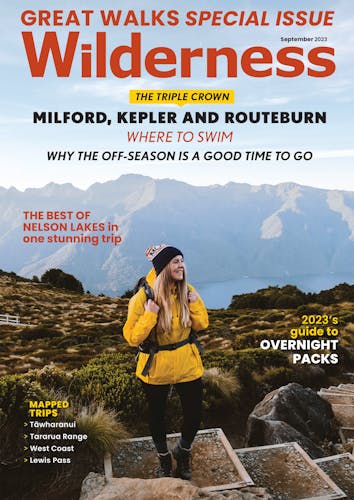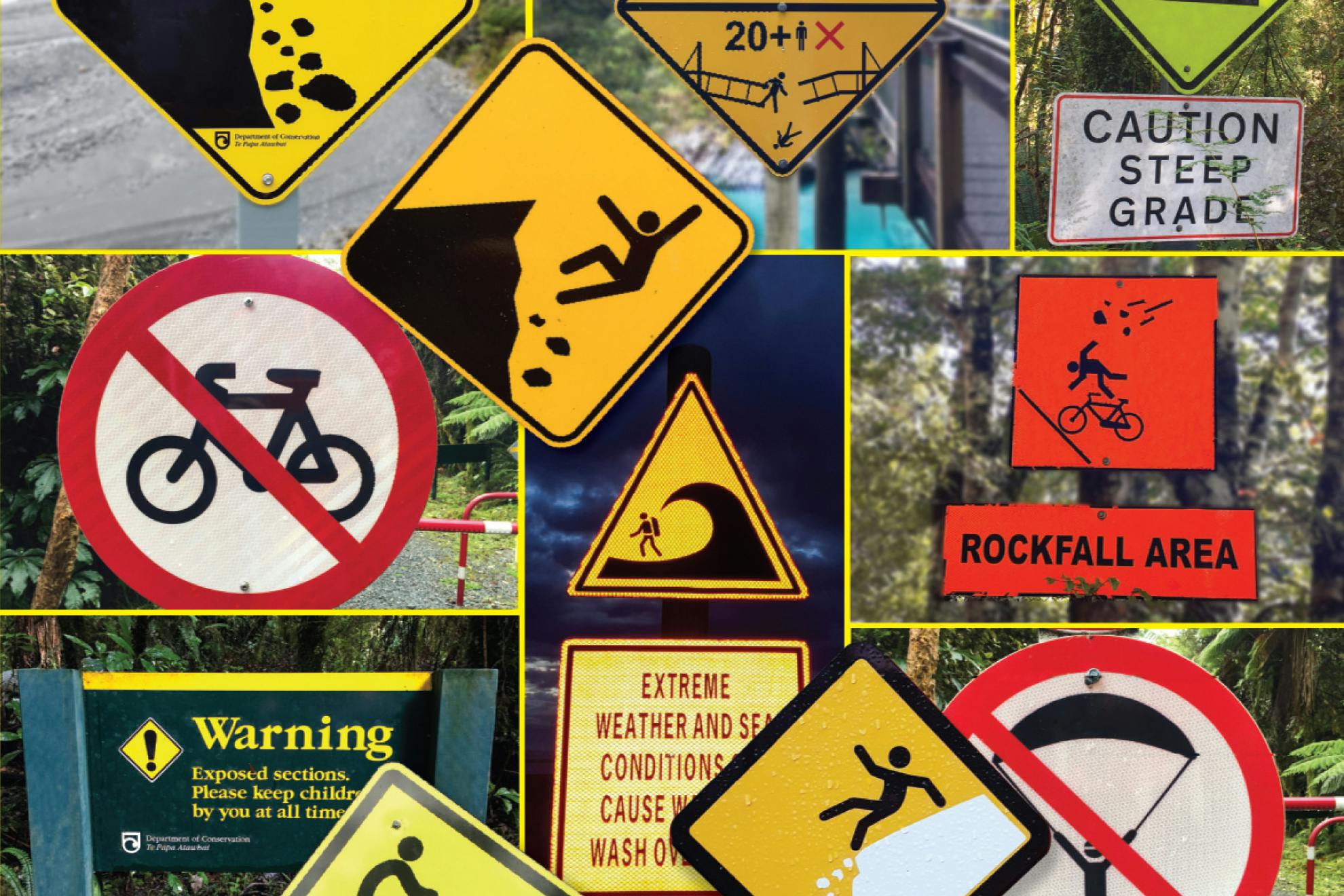Warning! Danger! Do not enter! The plethora of signs found on tracks and at huts could be putting people off going for a tramp. By Rachel Tallon
Poison laid, avalanche potential, river crossings, weight limits on bridges, pictures of undesirable animals. Whether temporary or permanent, signs on tracks tend to carry the weight of enforcement, and their numbers seem to be increasing.
Friends, who recently spent five months biking and tramping around the South Island, were struck by the number and variety of signs they encountered – far more than, say, 30 years ago. Certainly, authorities are more diligent about alerting people to risks around structures, natural hazards, or the dangers of being underprepared or ill-equipped for the terrain. Navigation, health and safety warnings – they are all relatively common.
Some people might see warning signs as a challenge to their competency. While words like ‘Do not cross here at high tide’ could for some be an indication to wait for low tide, for others, it might be, ‘if you can swim, she’ll be right’. Too many signs might breed complacency or risk-taking, a sort of ‘sign-blindness’, while for others, a warning sign might lead to a cancelled trip when in reality the risk level is low.
I experienced sign-induced caution when walking with a Japanese visitor in the greater Wellington region. We paused at the start of a track to take a photo next to the main information sign for the gentle one-hour walk. There were three other signs in place: one about bait being dropped, a second about some maintenance being undertaken, and a third showing a map of pest eradication activity. I had become immune to these signs, but my Japanese friend, whose English is pretty good, asked me if it was safe to walk the track. If I hadn’t been there to give the cultural translation, my friend might have returned to his car.
Recently, I had another ‘lost in translation’ moment with some tourists in Milford Sound. They fairly jumped when a weka appeared on the path. There had been a sign earlier with just a picture of a weka. They saw me and asked, “Is it okay? Not dangerous?” I reassured them: weka are a bit like chickens.
Of course, some signage is necessary to inform and to protect both nature and people, but these semiotic challenges also leave me wondering whether those erecting the notices carefully consider the cultural context and audience.
Richard Louv, the author of Last Child in the Woods: Saving Our Children From Nature-Deficit Disorder, says our modern lives are alienating us from nature. He is worried about children not getting into nature and argues that time spent outdoors is good for problem-solving and just generally feeling better about oneself. If nature is perceived as dangerous and risky – and many signs warn us of this – then some people might decide it’s safer not to venture outdoors.
This topic needed a long walk in the bush and further opinions. At Pāhautea Hut on Mt Pirongia, several foreign Te Araroa walkers were asked about the level of signage on the TA track. The unscientific survey (of about five people) concluded that signage – both directional and warning – was about right on the conservation estate, but upon leaving the bush there was virtually no signage and walkers relied on their GPS and common sense. One well-travelled Canadian suggested that from what he’d seen (and he’d been in our bush quite a bit), the level was about right. He noted that people need to take personal responsibility for risk. That, of course, requires education and experience.
But does the presence of too many notices warning of danger affect our ability to assess risk and make decisions for ourselves? Or is it a good thing, given all the hazards that can (and do) exist in the outdoors?
Interestingly, the absence of a sign also creates meaning. Should warning signs only be located in places where there is high traffic of inexperienced people (think Tongariro Alpine Crossing), or should they be everywhere where potential danger exists (and who determines this?) or just at the entrance to a track as with many overseas parks? Once you enter, keep your wits about you: we did warn you.
Signs are everywhere. I’m thinking we need to get it right so that they are not ignored or mocked, but neither should they dissuade people needlessly from experiencing the outdoors – nor detract from the view.







